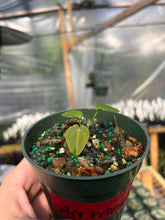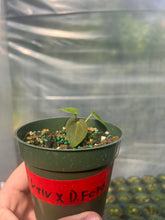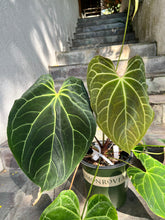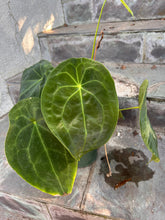You loved this cross the first time, so we’ve done it again!!!!
Seed parent: ace of spades HYBRID (shown in each photo)
This seed grown AOS, has the most velvety leaves we've seen from an AOS. The vibrant VELVET green leaves, red sinus, and bright veins make this anthurium a stand out.
*note- ace of spades is an unknown hybrid. When ace is crossed self, the children will always be unique.
Pollen parent: Dark Forgetii
We use a very dark Forgetii with a complete lack of irredescence venation, but a gorgeously irredescent leaf for breeding. The results are always out of this world!
The combination of these two plants should produce some wild traits and we are here for it.
SOIL:
Anthuriums are typically epiphytic and do well in a substrate with ample aeration- orchid bark, charcoal, coco coir, perlite, and things of that nature assist with aerating your substrate so it is not too dense and holding too much moisture. It is always best to play around with what substrate mixture works best for your environment.
LIGHT:
Anthuriums can survive in lower light conditions, but prefer at least 6 hours of bright, indirect sunlight each day. We grow our seedling under shade cloth, outdoors, for reference. Harsh, direct light may burn the leaves, and very low light could stunt growth and prevent flowering.
WATER:
Anthuriums do well to always have a slight level of dampness, but not constantly soggy.
CONDITIONS:
Anthuriums thrive in a humid environment. If you live in a more naturally humid area like we do, here in Central Florida, outside may be a good spot to keep them. Airflow is essential to prevent water build-up on the leaves, which can lead to fungus.
HISTORY:
Anthuriums are found throughout Central and South America. As of today there are 18 sectional groupings of anthuriums, with each section presenting similar defining traits. We most often offer anthuriums from the cardiolonchium and branchiolonchium sections. Interestingly- these two groups have been successful in crossing and we have two sectional crosses we are eager to grow out.








